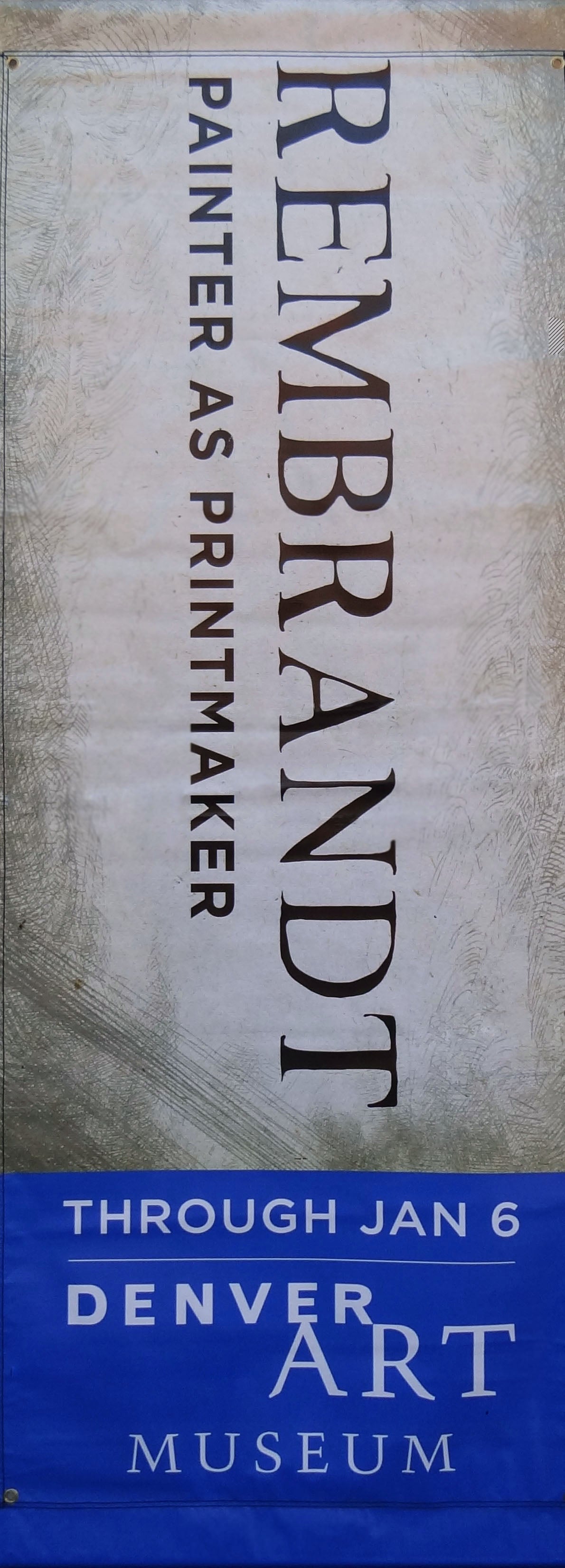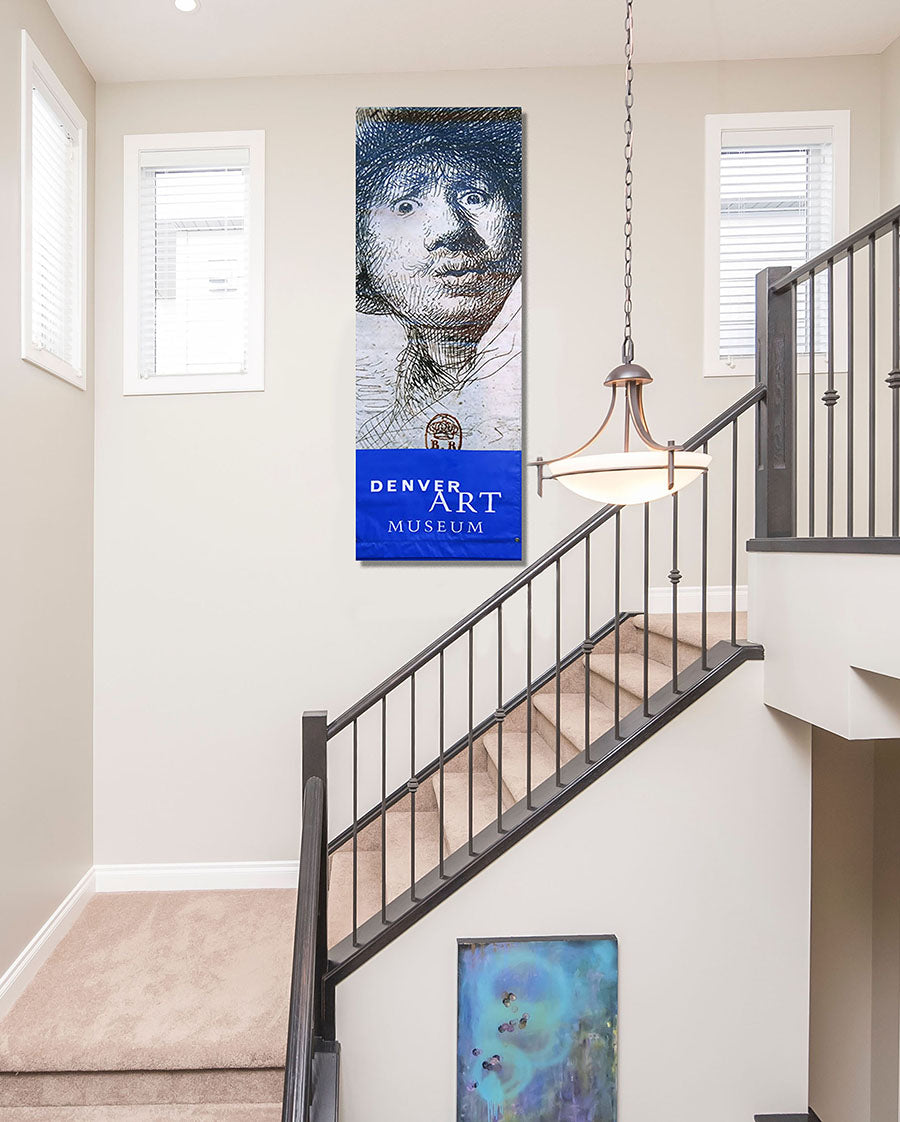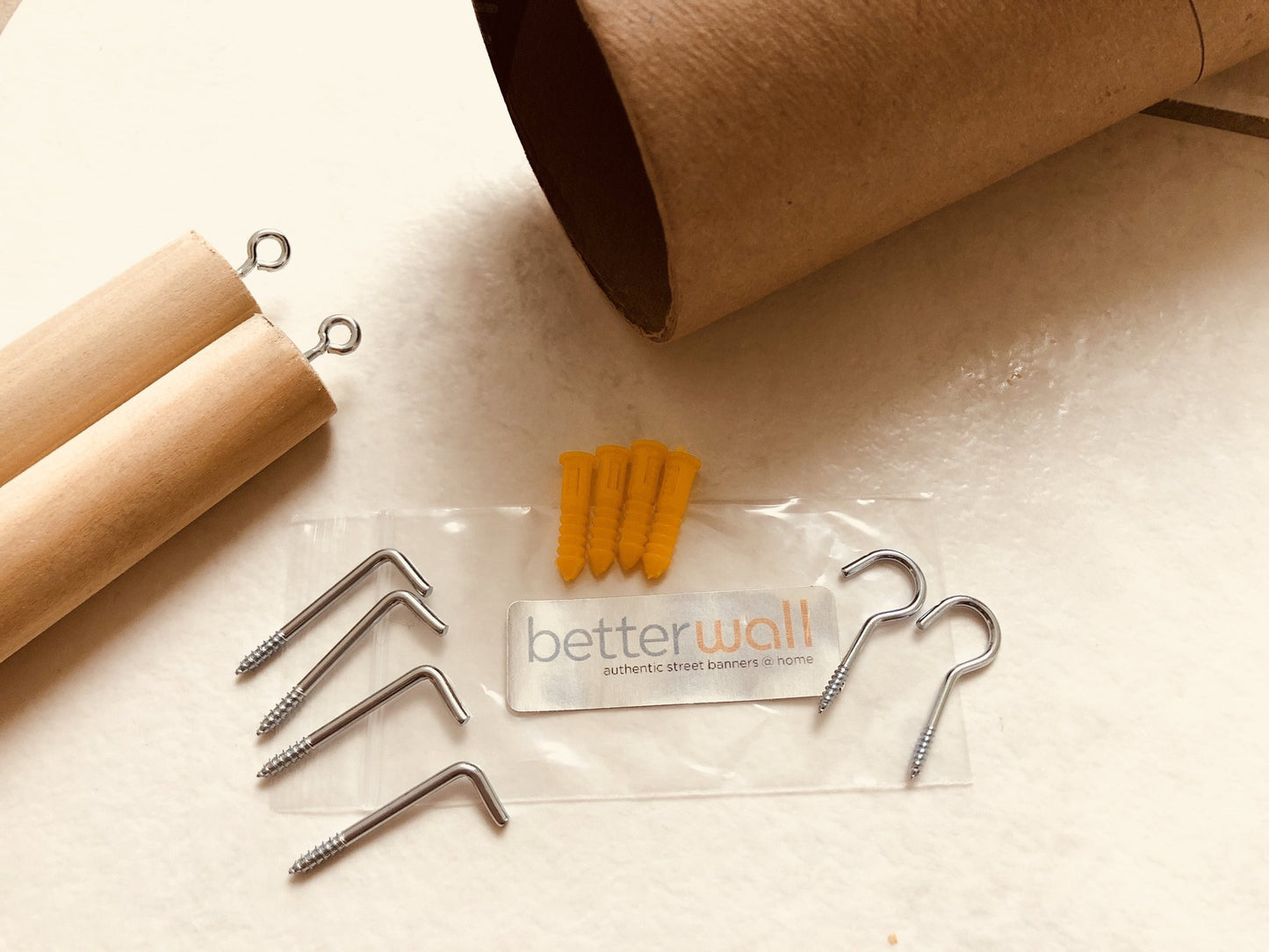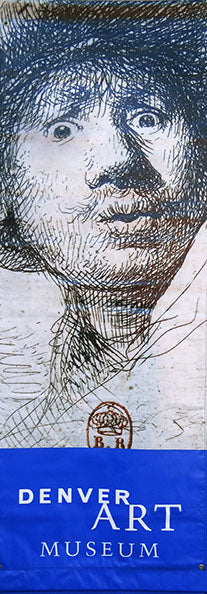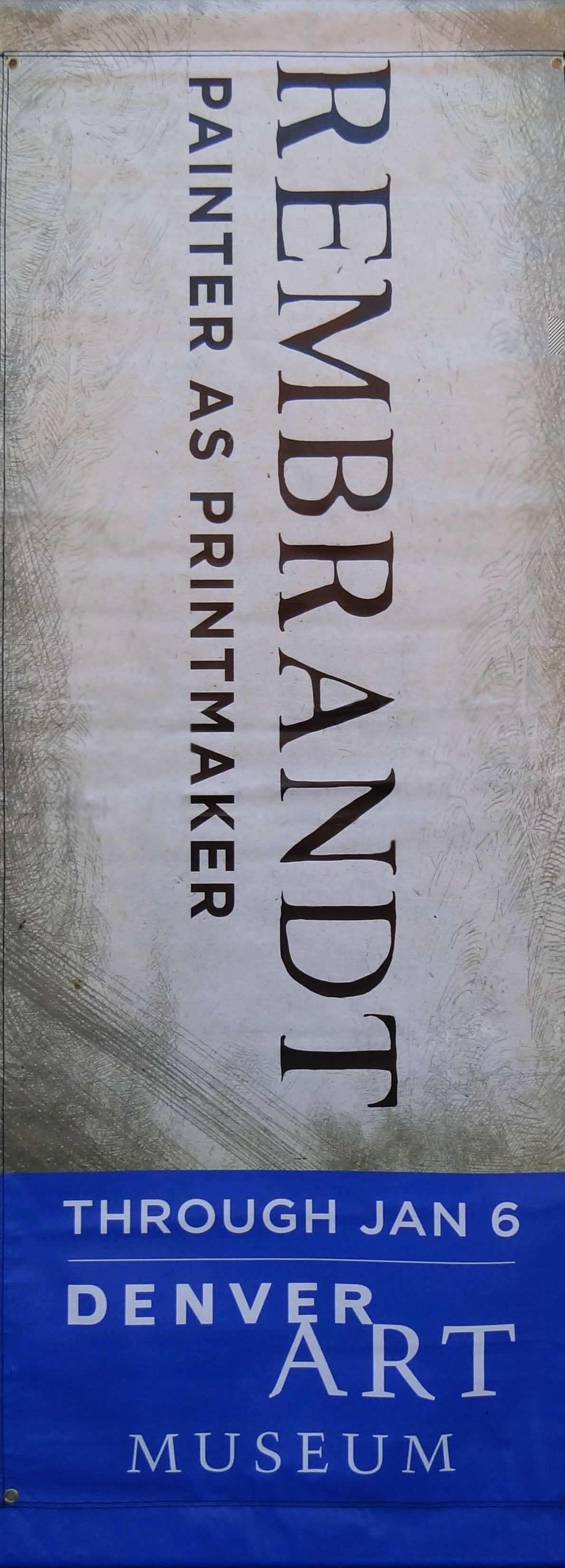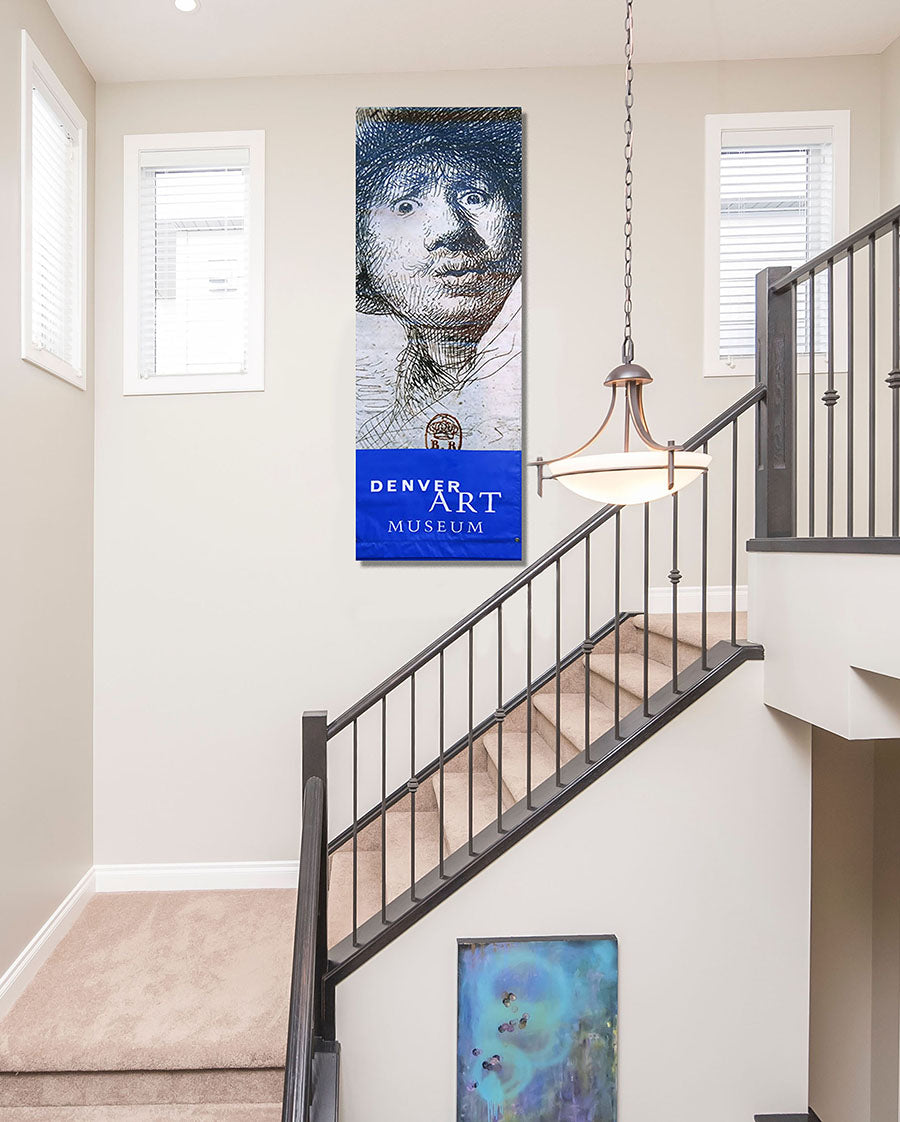Denver Art Museum
Rembrandt "Self Portrait in a Cap"
Rembrandt "Self Portrait in a Cap"
Couldn't load pickup availability
Share
From: Denver Art Museum
Limited Edition: 3
Exhibition: Rembrandt: Painter as Printmaker
Material: Printed 2-ply vinyl
Dimensions: 30" x 89" (76cm x 226cm)
Hanging Hardware Included
Description
As the exclusive venue for the exhibition Rembrandt Painter as Printmaker, the Denver Art Museum delved into Rembrandt’s lesser-known body of work, his etchings. The exhibition included about 100 prints, but also 17 drawings and four paintings to provide context for the artist’s creative process across his favorite media. In its Fall 2018 art preview, the New York Times described Rembrandt’s prints as “vivid, expressive and precise” and deemed the Denver exhibition one not-to-be-missed.
Rembrandt brought an innovative approach to printmaking, or intaglio, by combining etching, drypoint, and engraving. Etching involves a process of using a needle to etch or carve an image on a metal plate treated with a resin or wax material. The plate is then dipped into an acid bath which “bites” into the surface of the plate to reveal the etched image. Done without acid, drypoint is the technique of incising into the metal plate with a steel needle. Engraving is performed with a burin, a hand-held cutting tool, also without acid. Ink is then applied to the metal plate and pressed onto paper resulting in a print. Rembrandt worked on his plates in stages and printed variations which he sold as originals.
Two of Rembrandt’s numerous self-portraits were featured on the banners created to announce the exhibition. Self-Portrait in a Cap, Wide-Eyes and Open-Mouthed (circa 1630) and Self-Portrait Leaning on a Stone Sill (1639) were etchings with drypoint. The subject’s face in these works, as with all Rembrandt portraits and self-portraits, is partially eclipsed; the nose separates bright illumination from brooding shadows. Self-Portrait in a Cap was made earlier in Rembrandt’s career when his etchings mimicked drawings with distinct lines and open space. His later etchings resembled paintings as he developed the technique of using a mass of lines to create varying strengths, like different widths of a paint brush. Rembrandt’s etching career ended in 1660 when he was forced to sell his printing press, extensive art collection, and other assets to pay his debts.
The banners each featured one of the self-portraits and includes the Denver Art Museum logo in white on a royal blue background at the bottom. The back of the banners is identical with “REMBRANDT PAINTER AS PRINTMAKER” on a white background with black etch marks. In white on the same royal blue, “THROUGH JAN 6” and the museum logo appear on the bottom. View the other banner from this exhibition.
Provenance
This banner was displayed around the Denver area between September 16, 2018 and January 6, 2019. The Denver Art Museum was the sole venue for the exhibition.
About the Artist

